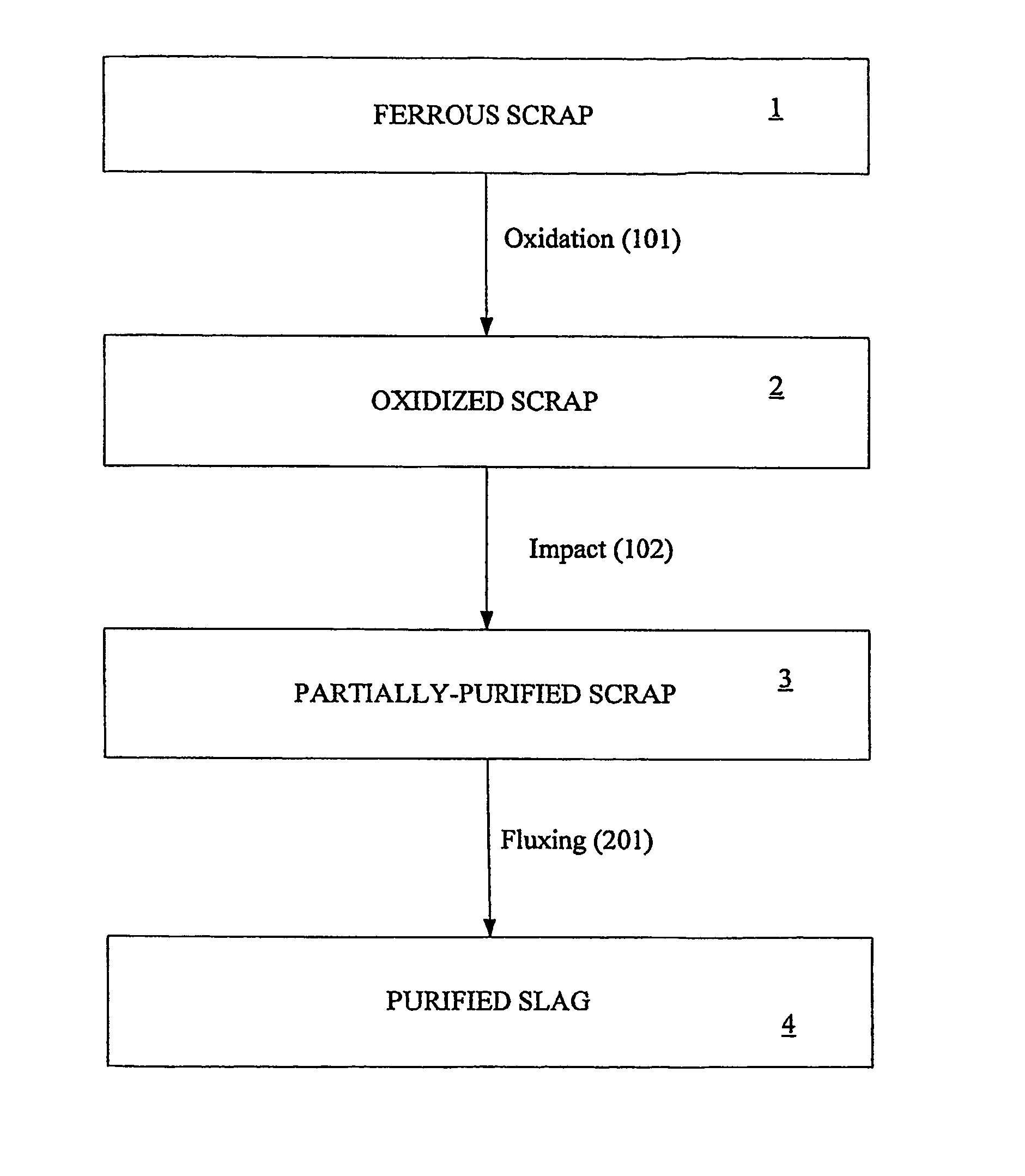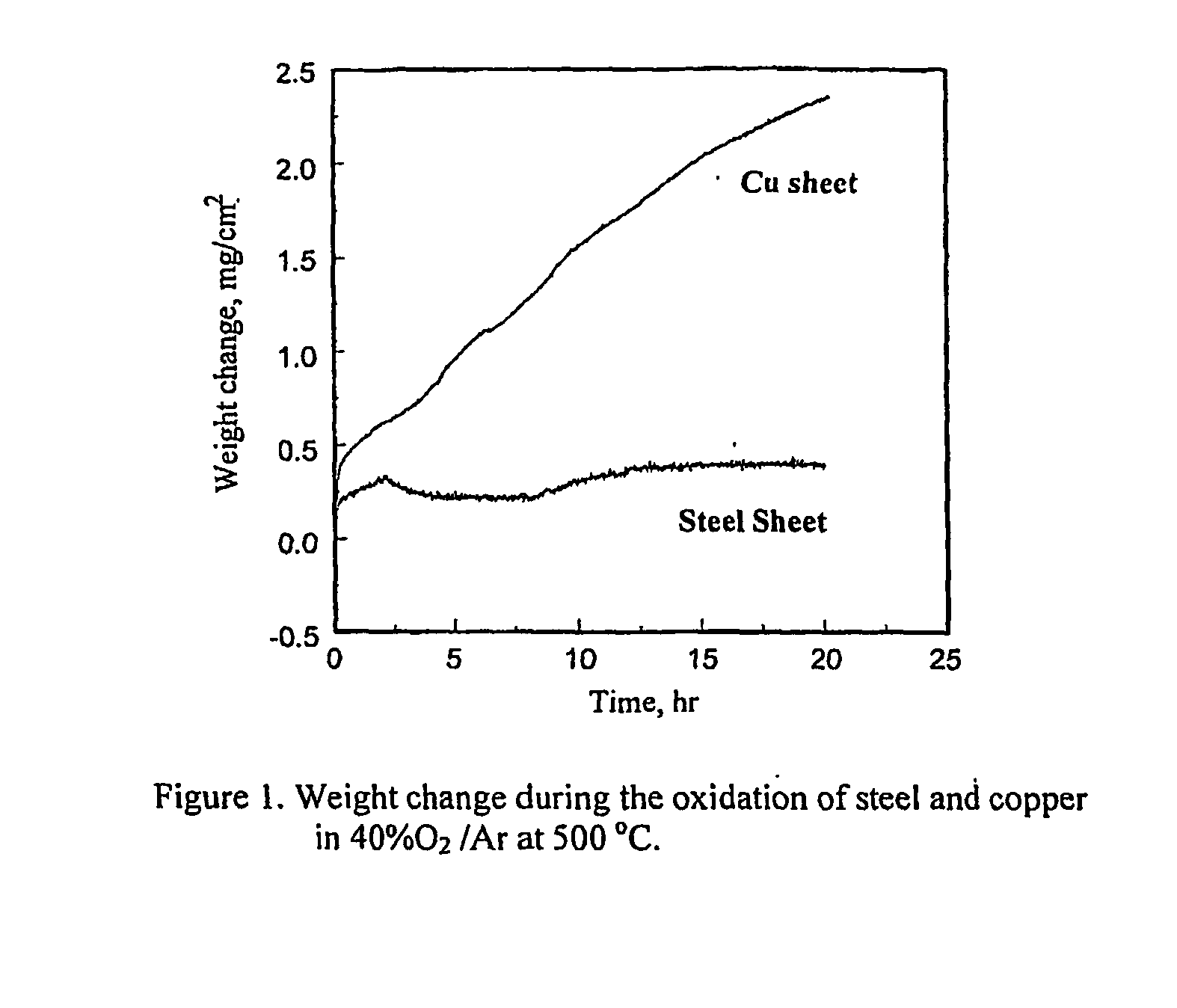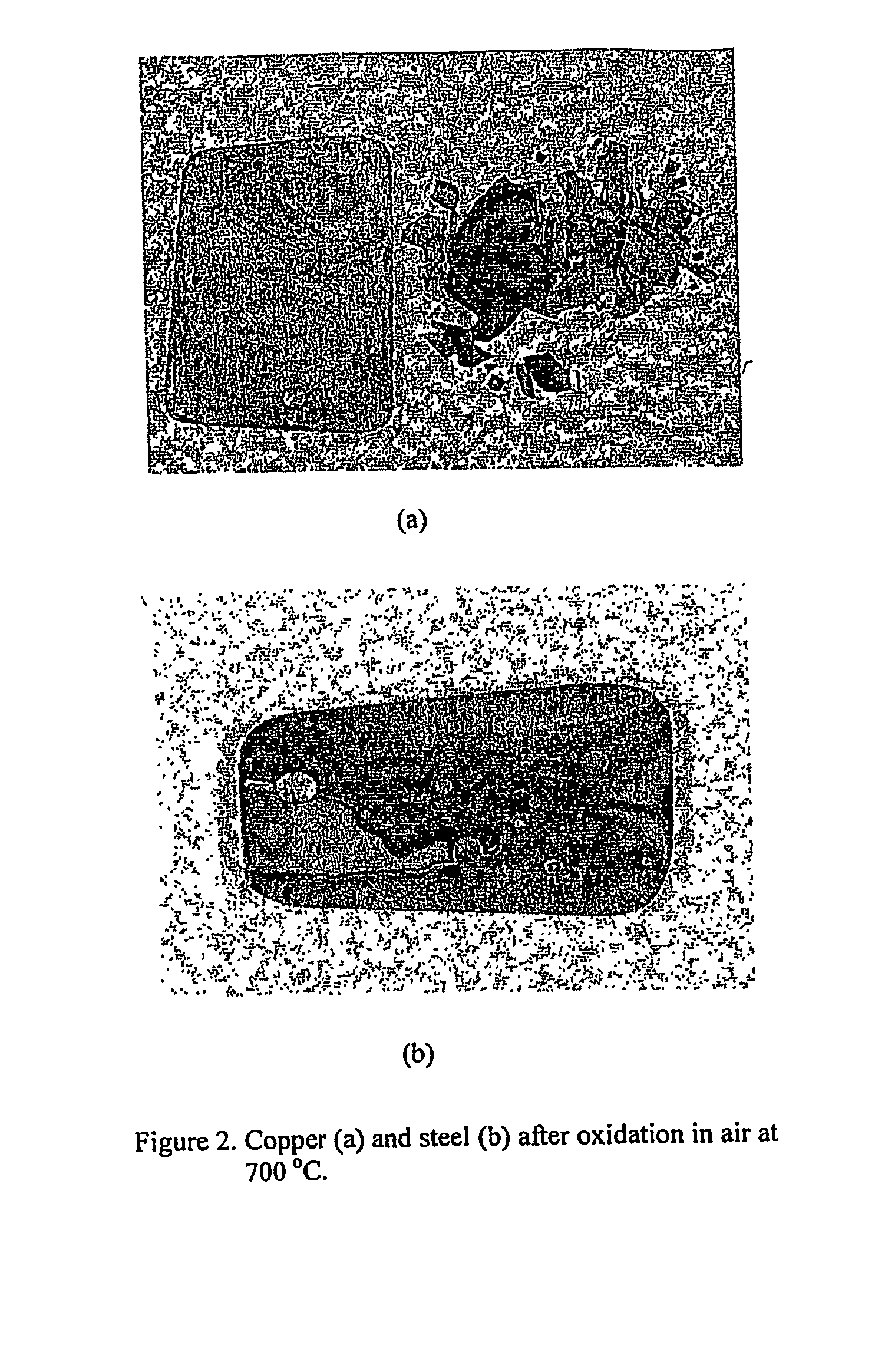Methods And Systems For Removing Copper From Ferrous Scrap
- Summary
- Abstract
- Description
- Claims
- Application Information
AI Technical Summary
Benefits of technology
Problems solved by technology
Method used
Image
Examples
example
[0048] Coupon specimens for copper and steel were prepared for the oxidation experiments. A big piece of steel was obtained from the body of a car in a junk yard and the piece was cut to create smaller specimens for the oxidation tests. The coupon specimens were abraded and polished, and then degreased and cleaned in an ultrasonic cleaner. The experimental apparatus used for the oxidation tests were described in Gilsoo Han and W. D. Cho, “High-Temperature Corrosion of Fe3Al in 1% Cl2 / Ar,”Oxidation of Metals, Vol. 58, 2002, p. 391, and contained a computer-controlled microbalance, a kanthal-wound furnace, gas train and mixing chambers of reagent gases.
[0049] The specimen was loaded with Pt-wire (0.02 inch diameter) inside a fused quartz reaction tube. The purified argon gas flow was maintained until the desired temperature was obtained. After the temperature of furnace reached the reaction temperature and was stable under the argon atmosphere, a O2—Ar gas mixture was introduced into...
PUM
| Property | Measurement | Unit |
|---|---|---|
| Temperature | aaaaa | aaaaa |
| Temperature | aaaaa | aaaaa |
| Time | aaaaa | aaaaa |
Abstract
Description
Claims
Application Information
 Login to View More
Login to View More - R&D
- Intellectual Property
- Life Sciences
- Materials
- Tech Scout
- Unparalleled Data Quality
- Higher Quality Content
- 60% Fewer Hallucinations
Browse by: Latest US Patents, China's latest patents, Technical Efficacy Thesaurus, Application Domain, Technology Topic, Popular Technical Reports.
© 2025 PatSnap. All rights reserved.Legal|Privacy policy|Modern Slavery Act Transparency Statement|Sitemap|About US| Contact US: help@patsnap.com



